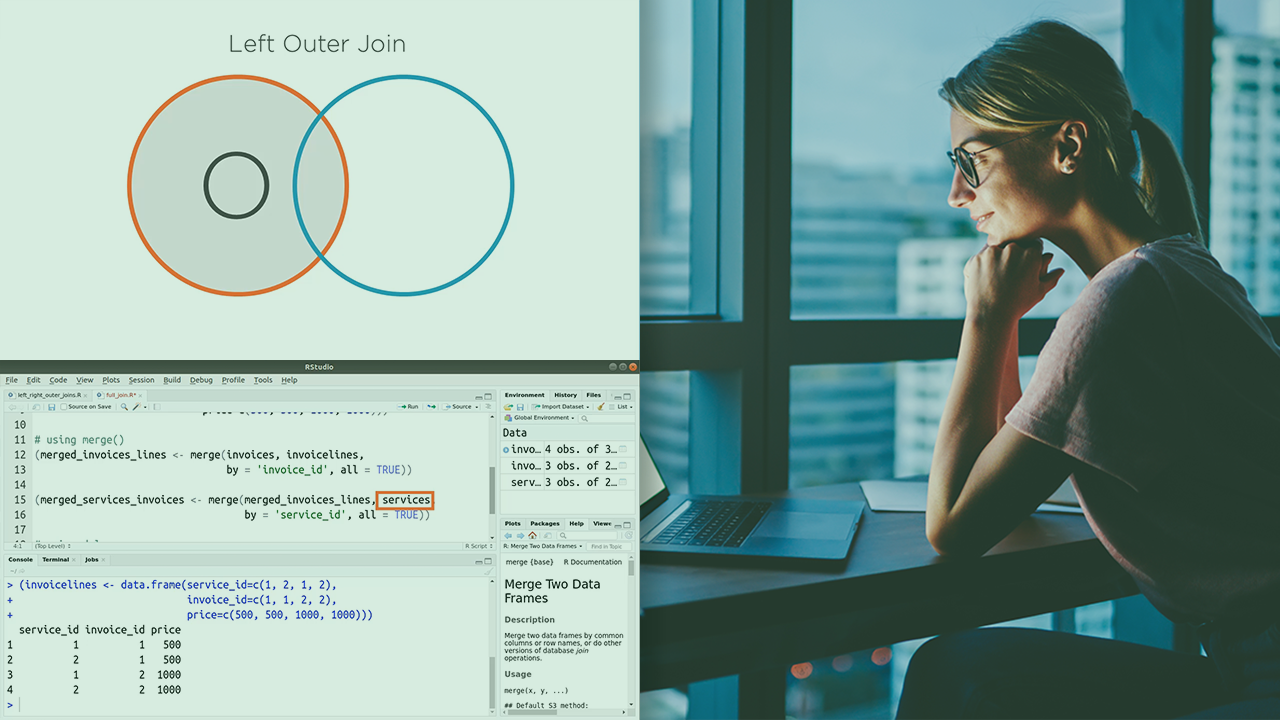- Course
Merging Data Sources with R 3
Learn how to merge data with R. How do you merge values into vectors? How do you merge vectors into data frames? How do you join data frames? See how to use base R and dplyr to do left, right, and full outer joins with plenty of examples.

- Course
Merging Data Sources with R 3
Learn how to merge data with R. How do you merge values into vectors? How do you merge vectors into data frames? How do you join data frames? See how to use base R and dplyr to do left, right, and full outer joins with plenty of examples.
Get started today
Access this course and other top-rated tech content with one of our business plans.
Try this course for free
Access this course and other top-rated tech content with one of our individual plans.
This course is included in the libraries shown below:
- Data
What you'll learn
In your R data science projects, you need very often to work with data which is spread out across multiple data sources. For example, given two separate data sets on products and their sales, how can you merge them into a new data set? In this course, Merging Data Sources with R, you will gain the ability to merge data from different sources in a controlled way that enables you to keep only the data you need. First, you will learn to merge vectors, which includes using the paste() and append() methods. Next, you will discover how to join data sets with the merge() function, which includes left, inner, right and full outer joins, on data frames that can have one-to-one, one-to-many, or many-to-many relationships. Finally, you will explore how to join data sets with the dplyr package, which covers the previous joins plus anti and semi joins. When you are finished with this course, you will have the skills and knowledge of merging data from different sources, needed to do data wrangling with R.

